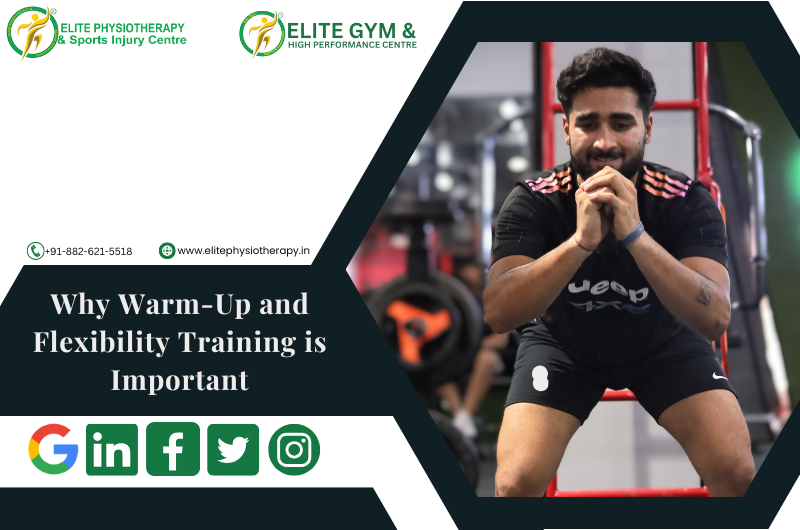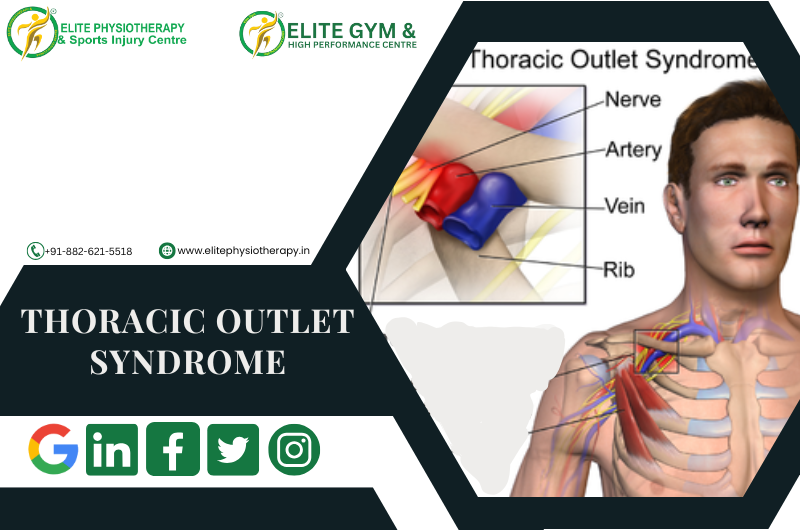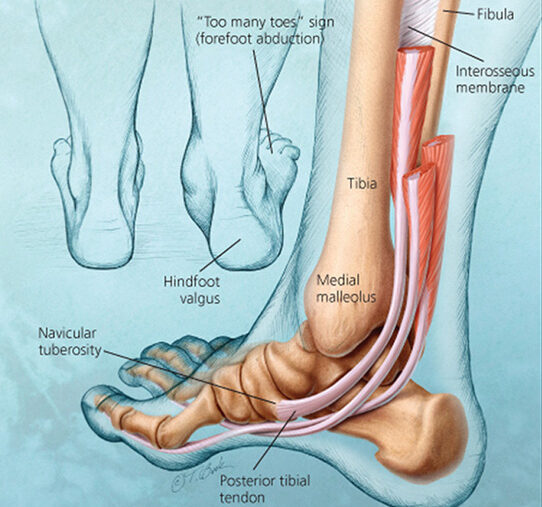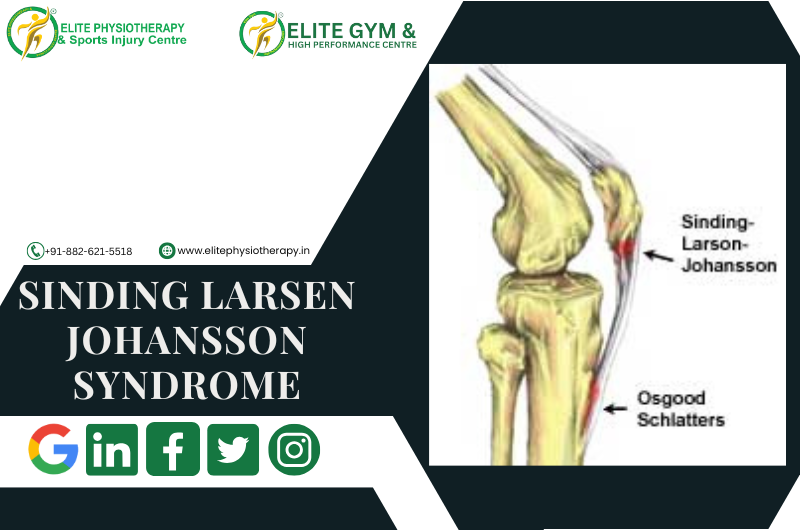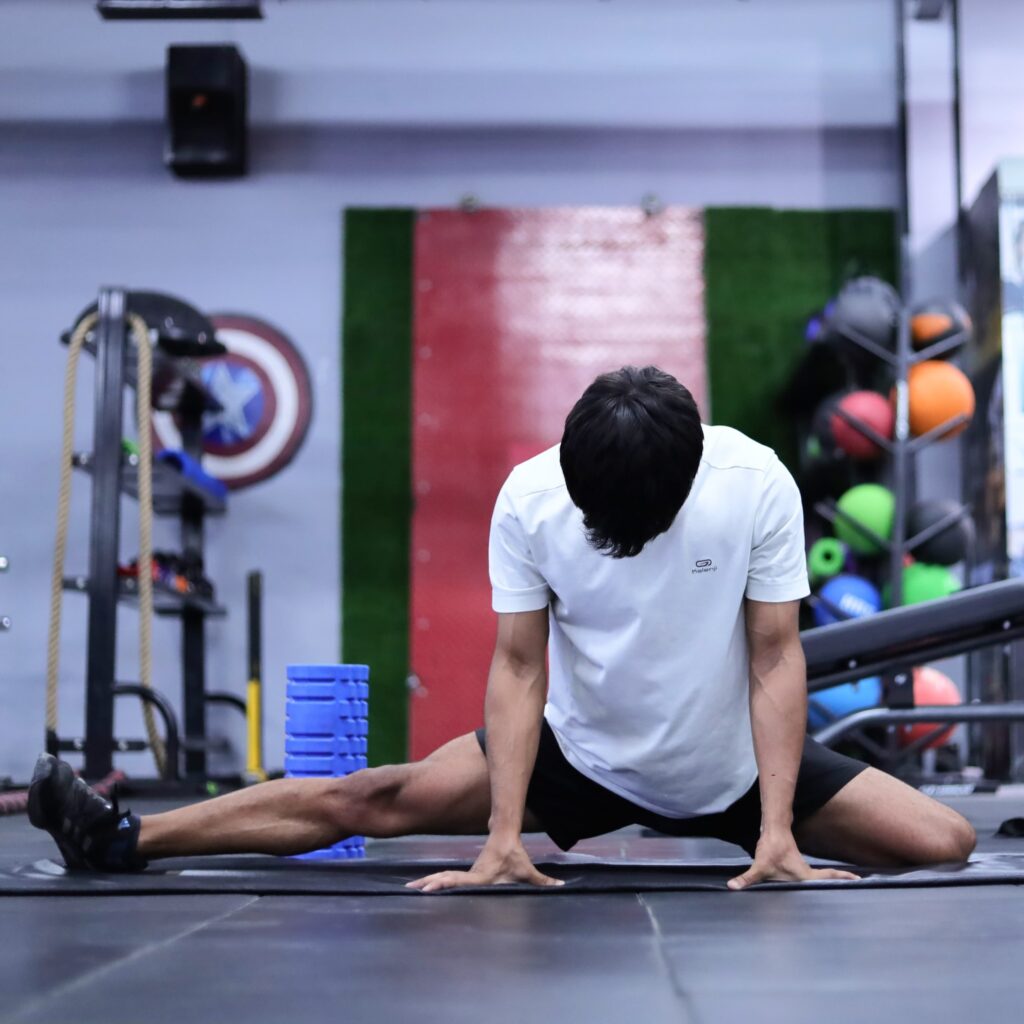Unlock Peak Performance, Prevent Injuries, and Boost Recovery
Imagine pushing on the accelerator as soon as you start your car. Sounds dangerous, doesn’t it? Your body is no different. It’s like asking injury when you go right into strenuous exercises or competitions without a suitable warm-up and flexibility regimen.
Athletes who disregard warm-ups frequently suffer from torn muscles or worse, as we have witnessed at Elite Physiotherapy and Sports Injury Centre. The good news? This is readily avoidable.
What Is a Warm-Up – And Why Is It Non-Negotiable?
The green light for your body is a warm-up. It gets your muscles, joints, heart, and lungs ready for activity. It stimulates your neurological system, increases blood flow, and warms your body. Most significantly, it lowers the possibility of cramps and injury during practice or competition.
Your warm-up should never be optional if you want to give it your all.
4 Key Components of an Effective Warm-Up
- Pulse Raiser: To raise heart rate, begin with 5–7 minutes of vigorous walking, light running, or cycling.
- Dynamic Movements: Incorporate arm circles, body twists, and leg swings to create dynamic movements. These enhance muscular control and joint mobility.
- Muscle Activation: Use bodyweight squats, glute bridges, and scapular push-ups to activate your main muscles.
- Sport-Specific Drills: Emulate the motions of your sport. Wrestlers may shadow wrestle; sprinters may skip.
- Duration: 10–15 minutes. That’s all it takes to prevent weeks of rehab!
What Is Flexibility? Why It’s Your Secret Weapon
The capacity of your muscles and joints to move freely without pain or restriction is known as flexibility. Flexibility improves posture, decreases stiffness, and increases productivity, whether you’re a desk worker, runner, or lifter.
Types of Flexibility Training You Need to Know
- Dynamic Stretching: Dynamic stretching is the ability to move, such as swinging one’s arms or legs. Ideal for warm-ups.
- Static Stretching: Maintaining a stretch for 30 to 60 seconds to extend muscles is known as static stretching. Perfect for cooling off.
- Active Stretching: Using your muscles to maintain a position is known as “active stretching.”
- Passive Stretching: Stretching with assistance, such as a partner or band, is known as passive stretching.
Fact: The best athletes train both mobility and flexibility. You should, too.
What Affects Your Flexibility?
- Age: Although flexibility declines with age, it can be maintained or even improved with regular exercise.
- Gender: Because of hormonal and anatomical variations, women are typically more adaptable.
- Activity Level: Your flexibility increases with movement.
- Muscle Tightness or Imbalance: Frequently brought on by injuries, overtraining, or bad posture.
- Injury History: Protective stiffness and scar tissue may restrict range of motion.
How Stretching Differs from Mobility Training
Many people mistakenly equate mobility training (improving movement control) with stretching (conditioning tissues). This is how they are different:
| STRETCHING | MOBILITY |
| Focuses on muscle length | Focuses on controlled joint movement |
| Often static | Often dynamic |
| Improves flexibility | Improves joint health and control |
| Best for cool-down | Best for warm-up |
Mobility and stretching are complementary but not interchangeable. Make use of dynamic mobility during warming up. To get the most out of your cool-down, use static stretching.
Combine both in your training routine for a body that moves like a well-oiled machine.
What Happens If You Skip Warm-Up and Flexibility Training?
- Muscle pulls, cramps, or tears
- Poor performance due to stiff muscles
- Decreased strength and coordination
- Longer recovery time post-training
- Mental disconnect between body and mind
Warm-up isn’t just physical; it mentally prepares you to dominate your workout or competition.
Real Benefits You Can Feel
- Fewer Injuries – Warm muscles are more adaptable under stress.
- Better Performance – You move faster, lift better, and feel stronger.
- Increased Range of Motion – You hit deeper squats, cleaner lunges, and sharper turns.
- Faster Recovery – Stretching helps flush out metabolic waste and reduces soreness.
Final Takeaway: Make It a Ritual, Not a Choice
At Elite Physiotherapy and Sports Injury Centre, we strongly believe that your pre-training ritual determines your success. Warming up and stretching is not just about preventing injuries—it’s about respecting your body and unlocking its full potential.
If you’re serious about results, don’t start without a warm-up. Don’t end without a cool-down.
Sample Routine
| TIME | ACTIVITY | FOCUS |
| 0-5 min | Light cardio (walk/jog/cycle) | Pulse raise |
| 5-10 min | Dynamic stretches | Mobility |
| 10-15 min | Squats, glute bridges, activation drills | Muscle priming |
| Post Training | Static stretching | Recovery & flexibility |
Visit Us to Learn the Right Way
Confused about how to start? At Elite Physiotherapy, we offer:
- Personalized warm-up and mobility plans
- Guided stretching sessions
- Functional assessments to identify tight or weak areas
- Modern tools like IASTM, dry needling, cupping, and Super Inductive System therapy
Book your session today at our Delhi or Gurgaon centres to move better, perform better, and recover smarter.

